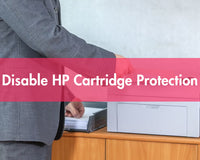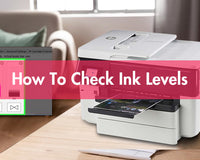If you've ever handled a store receipt, an airport boarding pass, or a shipping label, then you've likely come into contact with thermal paper. While thermal paper may look like regular paper at first glance, it doesn't require ink to print. So how does thermal paper work? In this blog, we'll take a deep dive into the world of thermal paper.
What Is Thermal Paper?
To understand how thermal paper works, we first need to define what it is.
Thermal paper is a special high-quality paper that has a coating that changes color when exposed to heat. This color change is achieved without the need for ink, toner, or ribbon. Because of this, it is widely used in thermal printers in point-of-sale systems, fax machines, medical devices, and more.
Unlike traditional paper used in inkjet or laser printers, thermal paper has a smooth texture due to its chemical coating. It is this coating that allows thermal paper to react to heat and produce a clear image.
But what exactly is this smooth surface? To answer this question, let's dissect the structure of thermal paper.
Components of Thermal Paper
The core of thermal paper is made up of several layers of key materials, each with a specific purpose.
1. Base Paper
This is the traditional paper layer that gives the material structure and flexibility. It is similar to standard printer paper, but is specially manufactured to be heat-resistant and dimensionally stable during the printing process.
2. Thermal Coating
This is where the magic happens. The thermal coating contains a mixture of a colorless dye (often called a leuco dye) and a developer. When heated, these chemicals react, resulting in a visible color change—usually black. The coating is engineered to react at specific temperatures, allowing for precise control during the printing process.
3. Protective Coating (Optional)
Some thermal papers contain a topcoat or backcoat. The topcoat protects the thermal layer from UV rays, moisture, and abrasion, extending the life of your prints. The backcoat helps eliminate static electricity or improves the paper's performance in automated equipment.
The combination of these layers creates a paper that is extremely responsive to heat and produces crisp, fast results—with just one printhead.
How Thermal Printing Works
So how exactly do we go from blank thermal paper to a printed receipt or label?
Thermal printing relies on heat, not ink.
There are two main types of thermal printers: direct thermal and thermal transfer. This article will focus on direct thermal printers, which use thermal paper directly.
In a thermal printer, a printhead containing an array of tiny heating elements scans across the thermal paper line by line. When the printer sends a signal to the printhead, it activates specific heating elements. These heating elements generate heat at precise points, triggering a chemical reaction in the thermal coating. The affected areas change color, creating text or an image.
The process is extremely fast and very quiet. It’s also cost-effective and easy to maintain, as there are no ink cartridges or toners required. The simplicity of this technology makes it ideal for high-speed, high-volume environments.
But what exactly happens at the molecular level during this color change? Let’s dive into the chemistry behind this transformation.
The Chemistry Behind the Reaction
A delicate balance of chemistry lies at the heart of thermal paper’s functionality.
The coating of thermal paper typically contains two key ingredients:
1. Leuco dyes – These dyes are colorless (or lightly colored) in their stable state.
2. Developers – These acidic compounds react with the leuco dyes to produce color when heated.
When a thermal printhead heats a specific area, the temperature rises rapidly, typically between 65°C and 100°C (149°F and 212°F). This heat causes the developer to melt and react with the leuco dye. As a result, the dye undergoes a chemical shift, rearranging its molecular structure to produce a visible, stable color, usually black.
This reaction is complete within milliseconds, allowing for fast, high-resolution printing. Some specialty thermal papers can produce colors such as blue or red by using different dye-developer combinations or multiple chemical layers that are activated at different temperatures.
Advantages of Thermal Paper
Thermal paper's widespread adoption is no accident. It offers a number of key benefits that make it a top choice across industries:
Ink-Free Printing: Thermal printing requires no ink, ribbons, or toner, simplifying the supply chain and reducing maintenance costs.
Fast and Quiet: Rapid chemical reactions mean high-speed printing with minimal noise, perfect for retail or healthcare settings.
Compact Devices: Thermal printers are typically smaller and lighter than traditional ink printers.
Energy Efficient: Because only heat is required to print, these systems use less energy.
With these benefits, thermal paper can be found everywhere, from ATMs to hospital wristbands, event tickets to barcodes.
Limitations and Considerations
While thermal paper is convenient to use, there are some issues that users need to be aware of.
Heat Sensitivity: Because thermal paper reacts to heat, prolonged exposure to high temperatures can damage it. What happens when you place a receipt on your car dashboard on a sunny day? It will probably turn black and unreadable.
Fading Over Time: Thermal printing paper can fade over months or even years, especially if exposed to light, friction, or chemicals such as oils and detergents. This makes thermal paper less suitable for archival or legal documents.
Health Concerns: Some thermal papers contain Bisphenol A (BPA) or Bisphenol S (BPS) - chemicals that have raised concerns about health and the environment. Not all thermal papers are BPA-free, although regulators in many countries have implemented restrictions.
As public awareness grows, manufacturers have begun to offer safer and more sustainable alternatives.
Modern Alternatives and Innovations
In response to the many drawbacks of traditional thermal paper, the industry has developed newer, safer alternatives.
BPA-Free and Phenol-Free Papers: Many modern thermal papers now use alternative developers, eliminating harmful chemicals while maintaining print quality.
Durable and Archival-Grade Papers: Some manufacturers have introduced thermal papers with enhanced topcoats to prevent fading and environmental damage, making them suitable for long-term storage.
Eco-Friendly Options: Thermal papers made from sustainable resources or easily recyclable are becoming increasingly popular. Some are even certified compostable.
Meanwhile, digital alternatives such as electronic receipts and mobile boarding passes are radically reducing reliance on printed materials. Still, thermal paper remains an essential tool for many industries.
Environmental Impact and Disposal
A key concern with thermal paper is its environmental footprint.
Due to its chemical coating, thermal paper isn’t always as recyclable as standard paper. In fact, mixing thermal paper into regular recycling streams can contaminate the recycling process. This is especially true for papers containing bisphenol A (BPA) or bisphenol S (BPS), which can interfere with recycled products.
So, what can be done?
Separate Disposal: Businesses that process large amounts of thermal paper are encouraged to process it separately from standard recyclables.
Switch to BPA-Free Paper: While not all BPA-free thermal papers are recyclable, they are generally less toxic to produce and process.
Reduce Usage: Providing digital receipts to customers whenever possible can reduce paper waste and cut costs.
As sustainability becomes an increasing priority, businesses and consumers alike are seeking cleaner, more environmentally friendly alternatives to traditional thermal paper.
Conclusion
Thermal paper may seem unremarkable, but it packs a punch in terms of innovation and usefulness. Using heat-activated chemicals instead of ink, it enables fast, efficient, and cost-effective printing that supports the daily operations of countless industries. From the chemistry behind color change to the environmental impact of its use, understanding how thermal paper works can help businesses make more informed decisions. As technology continues to evolve, thermal paper is expected to adapt, becoming safer, more sustainable, and just as indispensable.












